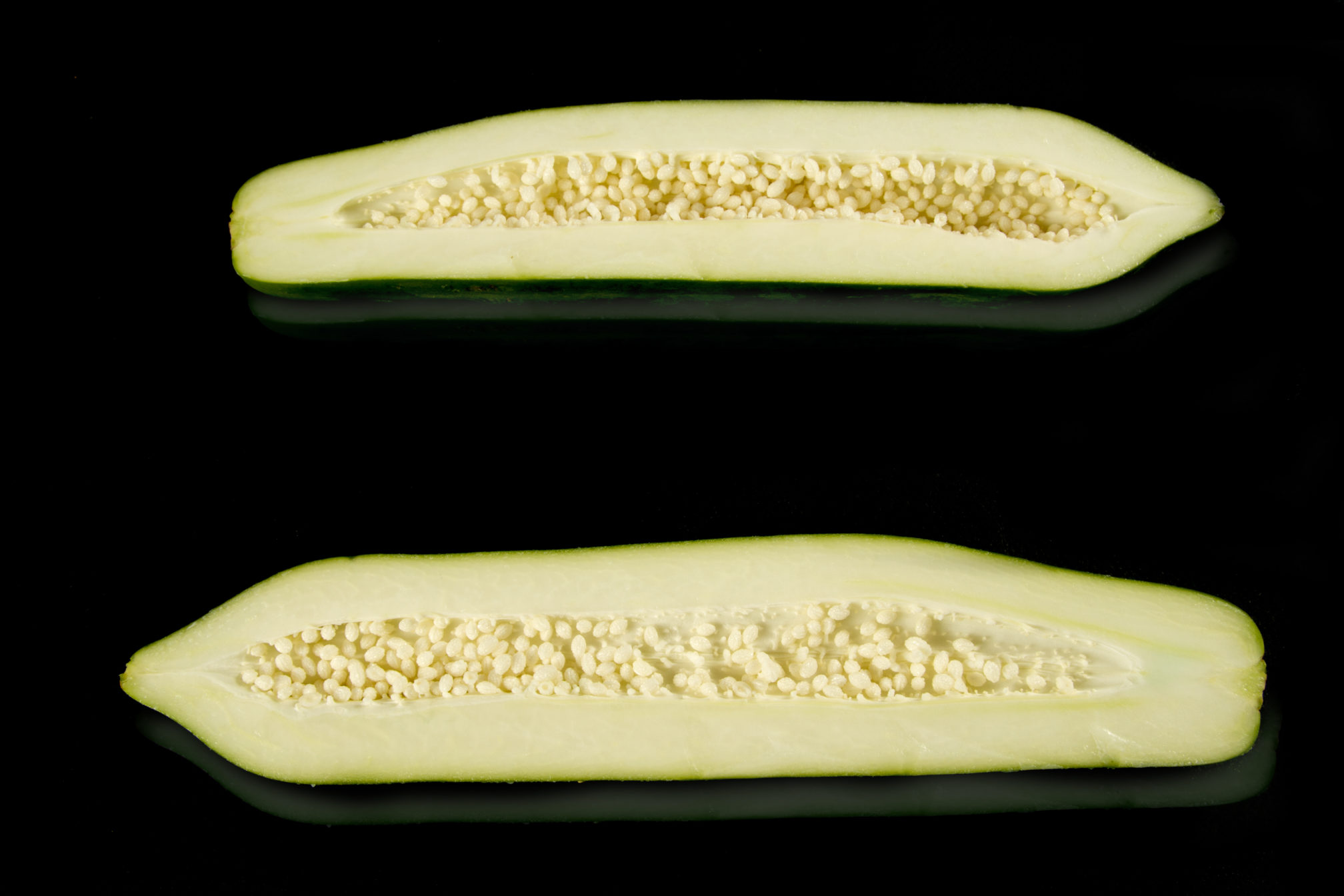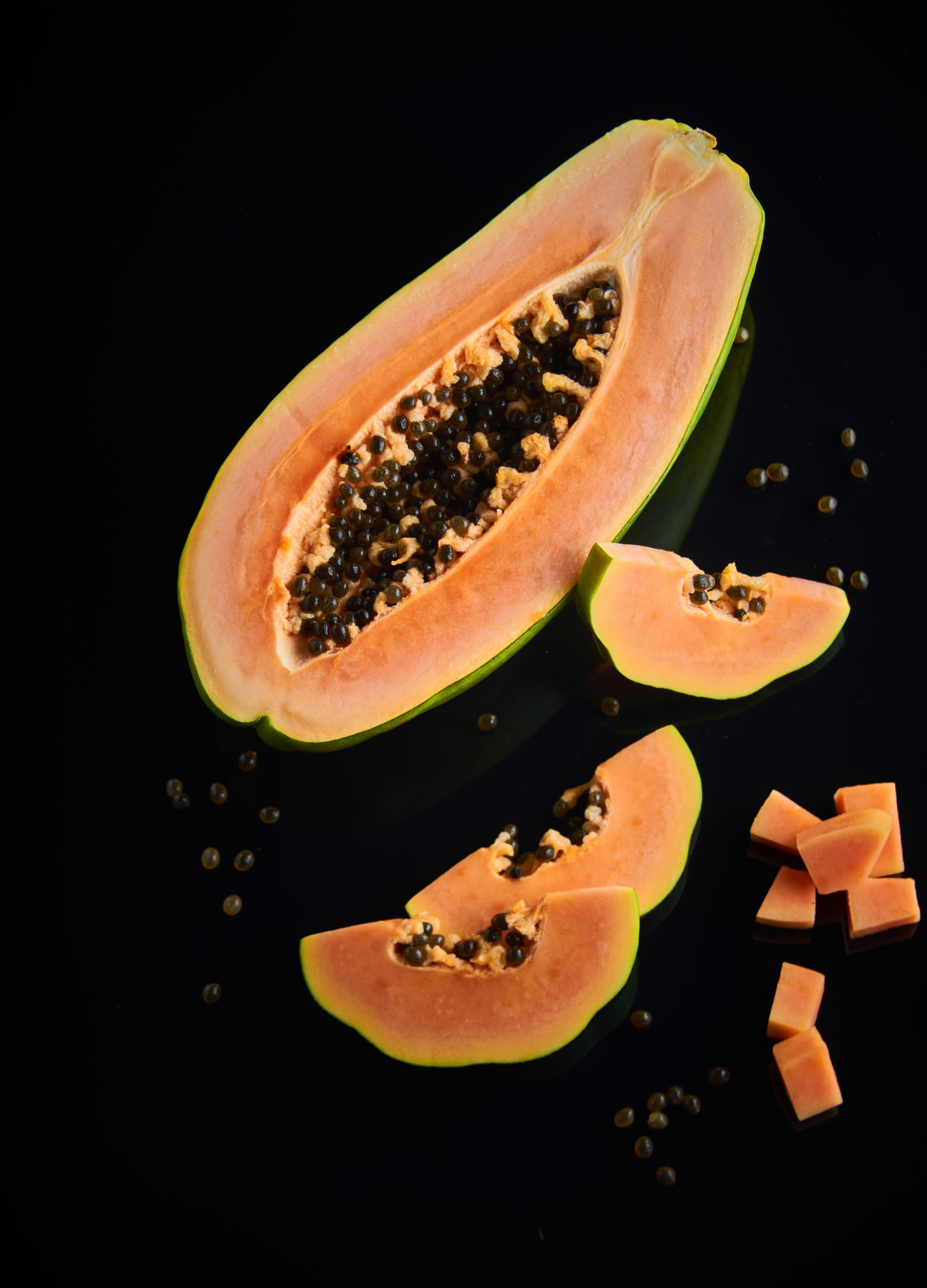Papaya
The melon of the tropics
The papaya is an oblong fruit that looks like an elongated melon. Its skin changes from green to yellow as it ripens. When green, its flesh is whitish, with a subtle mild flavour; when ripe, its flesh is yellow-orange and its pulp is juicy and delicately sweet. Lots of people liken it to a melon. When ripe, it can be eaten plain as a melon, or in fruit salads, ice cream, jams, etc.
It is one of the fruits richest in vitamin C, which contributes to the body’s defences (64 mg per 100 g, which is much more than citrus fruit). Its vitamin A level is also much higher than that of most fruits (0.95 to 1.8 mg per 100 g). This vitamin helps with good eyesight, bone growth and skin health. It also contains a lot of B-group vitamins and a high level of potassium (over 200 mg).
A perfect papaya for salads
Native to South-East Asia, the green papaya is eaten as its name suggests, when its flesh is still whitish. It is most often eaten shredded in salads. Its spicy, acidic, sweet and salty flavours make it a highly appreciated food.
Formosa
It is one of the fruits richest in vitamin C, which contributes to the body’s defences (64 mg per 100 g, which is much more than citrus fruit). Its vitamin A level is also much higher than that of most fruits (0.95 to 1.8 mg per 100 g). This vitamin helps with good eyesight, bone growth and skin health. It also contains a lot of B-group vitamins and a high level of potassium (over 200 mg).
The XXL papaya
Larger than its cousin the golden papaya (1 to 2 kg), the Formosa also looks like an elongated melon. Its skin changes from green to yellow as it ripens. When green, its flesh is whitish, with a subtle mild flavour; when ripe, its flesh is yellow-orange and its pulp is juicy and delicately sweet. Lots of people liken it to a melon. When ripe, it can be eaten plain as a melon, or in fruit salads, ice cream, jams, etc.
It is one of the fruits richest in vitamin C, which contributes to the body’s defences (64 mg per 100 g, which is much more than citrus fruit). Its vitamin A level is also much higher than that of most fruits (0.95 to 1.8 mg per 100 g). This vitamin helps with good eyesight, bone growth and skin health. It also contains a lot of B-group vitamins and a high level of potassium (over 200 mg).


